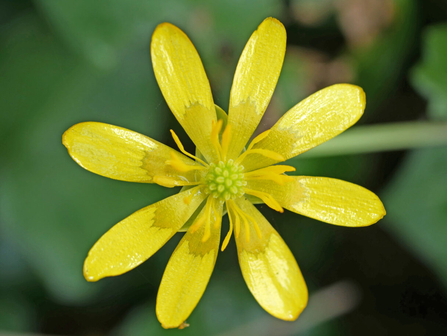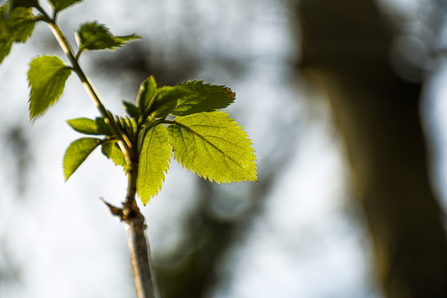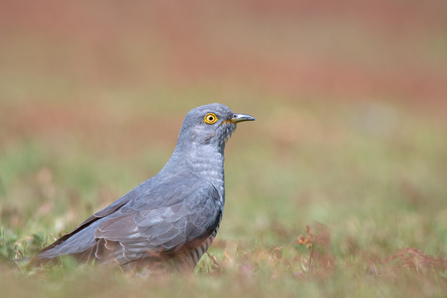The pigs Hazel and Beech have left the reserve, leaving a large section of the boggy area below the concrete causeway nicely churned up. We wait to see what germinates from the seedbank in the puddled peaty soil. Elsewhere on damp banks and woodland edges, the first of the buttercup family on the reserve is flowering.
The glossy yellow petals of lesser celandine Ficaria verna only open in sunshine, held in a parabola to reflect the sun inwards, raising the temperature in the bowl of the flower, a boon for early-flying insects seeking the pollen and nectar provided. Gardeners know that every bulbil at the base of the plant can grow into a new plant and botanist Alex Lockton has identified the subspecies verna in one location on the reserve, with bulbils developing in the leaf-axils just to help spread it even more quickly.



